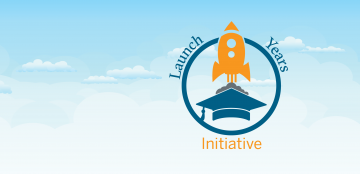
Twenty States Join the Launch Years Initiative
The Launch Years Initiative supports the scaling of mathematics pathways from high school through postsecondary education and into the workplace, aligned to students’ goals and aspirations. Over the next three years, twenty states will be joining this work, along with national organizations and leaders in mathematics education and educational equity.
The states joining the Launch Years Initiative are Arizona, Arkansas, California, Colorado, Georgia, Indiana, Kansas, Louisiana, Maine, Maryland, Massachusetts, Michigan, New York, North Carolina, Oklahoma, Oregon, Rhode Island, Utah, Washington, and Wisconsin.
![]()
“Through these twenty states, we have the potential to directly impact hundreds of thousands of students across the country,” said Dave Kung, director of policy at the Dana Center. “Our nation’s students, particularly students who are Black, Latino, or experiencing poverty, often experience mathematics as a barrier to finishing a postsecondary degree or even to being accepted into a postsecondary institution. The Launch Years Initiative and these twenty states will be working to change these realities for students.”
States will focus on different areas, including designing and implementing postsecondary and high school mathematics pathways, modern math courses and content, equitable impact, and advising practices. For some states, this will be a continuation of work with the Launch Years team.
“Both Georgia and Washington worked with us during our first three years of the Launch Years Initiative,” said Lindsay Fitzpatrick, Dana Center policy and implementation lead. “We’ve gotten to see the huge changes possible in this work. Georgia recently adopted new K–12 mathematics standards and policies, and we’re seeing 98% of their 12th grade students taking math courses recommended by higher education institutions in the state. Washington developed a structure to modernize their Algebra 2 course framework. I’m excited to see how they continue to grow, and how they can provide leadership and feedback to other states hoping to improve mathematics pathways similarly in their own contexts.”
The Need to Focus on Mathematics Pathways
One of the most urgent education issues of our time is ensuring equitable access to an excellent, more advanced mathematics education for all students. As the workforce continues to evolve and rely on advancing technology, our mathematics education must meet the demands for mathematical knowledge and skills.
“Calculus will always be important,” said Kung. “But working with statistics and data are increasingly needed across a wide range of modern careers. We have to prepare students for the modern world.”
Yet we see mathematics education, particularly in the transition from high school into postsecondary opportunities, serving as a barrier to students’ success and limiting their opportunities, especially for those students who are Black, Latino, or experiencing poverty.
Three major barriers impede students during this transition, as outlined in the Launch Years Executive Summary.
- Students experience inequitable opportunities to learn. Access to high-quality materials, advanced courses, and effective instruction is too often limited for students in high-poverty or majority Black or Latino areas than for students in wealthy or majority white areas.
- Mathematics is misused in college admissions criteria. Many colleges and universities use mathematics as an admissions gatekeeper. Requirements that prioritize algebraic courses over other rigorous pathways such as statistics have little to no relation to students’ readiness to succeed in courses that may be more relevant to their career aspirations.
- Postsecondary readiness policies are inconsistent and misaligned. The definition of postsecondary readiness varies across K–12 and higher education, leading to a wide variety of course requirements. How postsecondary readiness is defined often determines whether a student will be required to repeat courses or be placed in non-college-credit remedial courses.
By addressing these three barriers, the Launch Years Initiative will help students gain access to multiple mathematics pathways in high school that are aligned to postsecondary education options and relevant to their future aspirations.
States and National Organizations Working Together
States will be working together, learning with and from one another over the next three years. Along with these twenty states, leaders from major national mathematics organizations are collaborating to strengthen and advocate for work that improves the experiences and outcomes for students transitioning from high school into postsecondary education.
The Launch Years Math Organizations Leadership Network (LY-MathLN) includes members from the Alliance of Indigenous Math Circles, American Mathematical Association of Two-Year Colleges, American Statistical Association, Association of Mathematics Teacher Educators, Association of State Supervisors of Mathematics, Benjamin Banneker Association, Conference Board of Mathematical Sciences, Mathematical Association of America, National Council of Teachers of Mathematics, NCSM: Leadership in Mathematics Education, and TODOS: Mathematics for ALL.
LY-MathLN will release a joint call to action report soon that outlines how the leading math organizations can advocate with their members for necessary changes at their local institutions and systems.
“The collective power of these twenty states and leading mathematics organizations will allow the Launch Years Initiative to drive meaningful change that becomes normative practice,” said Kung. “Students will reap the benefits, with math options that enable their success instead of inhibiting it."
The Launch Years Initiative is led by the Charles A. Dana Center at The University of Texas at Austin, in partnership with Education Strategy Group, Parent Institute for Quality Engagement, and Texas Advanced Computing Center.
Get in Touch
How can the Dana Center work with you to ensure that our nation's students are ready for postsecondary education and the contemporary workforce?
